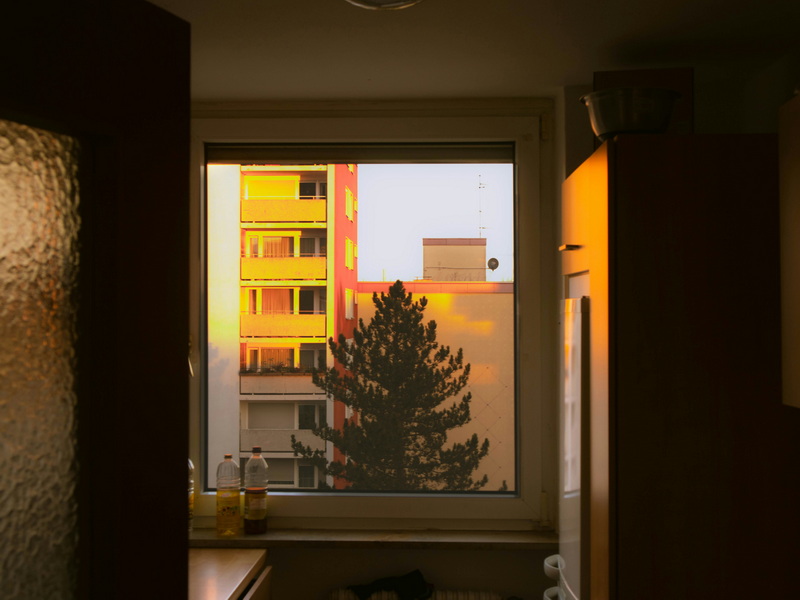English 




Views: 222 Author: Astin Publish Time: 2025-02-04 Origin: Site



Content Menu
>> 1. Measure the Window Opening
>> 4. Install the Aluminum Screen Mesh
● Choosing the Right Aluminum Screen Mesh
● Installation Tips for Different Window Types
● Troubleshooting Common Issues
● Environmental Considerations
● Advantages of Aluminum Screens
● FAQs
>> 1. How long do aluminum window screens last?
>> 2. Can I paint aluminum screens?
>> 3. Are aluminum screens better than fiberglass?
>> 4. How do I fix a dented aluminum screen?
>> 5. Do aluminum screens reduce airflow?
Creating aluminum window screens is a practical DIY project that enhances ventilation, protects against insects, and improves energy efficiency. This guide provides a detailed, step-by-step approach to crafting durable aluminum screens, along with essential tips and FAQs to ensure success.

Before starting, gather the following:
- Aluminum screen frame kit (adjustable for custom sizes)
- Aluminum screen mesh (charcoal or black for reduced glare)
- Spline (rubber cord to secure the mesh)
- Spline roller tool (concave and convex sides)
- Utility knife
- Hacksaw or miter saw
- Measuring tape
- Flathead screwdriver
- Safety gloves and glasses
Optional: Duct tape for stabilizing the frame and paper towels for cleaning.
Accurate measurements ensure a snug fit:
- Measure the width at the top, middle, and bottom of the window.
- Measure the height on the left, center, and right sides.
- Use the smallest dimensions for both width and height.
- Subtract ¼ inch from each measurement to allow clearance.
Pro Tip: For frames requiring corner connectors, subtract an additional 1½ inches to account for connector overlap.
- Mark the aluminum frame pieces using the adjusted measurements.
- Use a hacksaw or power miter saw to cut the frame pieces. Ensure cuts are straight and smooth.
- Cut two pieces for the width and two for the height.
Safety Note: Wear gloves to avoid sharp edges.
- Insert corner connectors into the frame channels.
- Join the horizontal and vertical pieces to form a rectangle.
- Ensure the spline groove (the channel holding the mesh) faces upward and aligns across all sides.
- Lay the frame on a flat surface and unroll the aluminum mesh over it, leaving a 1-inch overhang on all sides.
- Use the convex side of the spline roller to press the mesh into the groove at one corner.
- Secure the mesh by pressing the rubber spline into the groove with the concave side of the roller. Work clockwise, pulling the mesh taut to eliminate wrinkles.
Common Mistake: Over-tightening the mesh can warp the frame. Apply moderate tension.
- Use a utility knife to cut the excess mesh along the outer edge of the spline channel.
- Hold the knife at a 45-degree angle to avoid damaging the spline.
- Insert the screen into the window opening, ensuring it sits flush against the frame.
- Secure with spring clips or screws, depending on your window type.

When selecting aluminum screen mesh, consider several factors:
- Mesh Size: The size of mesh openings can affect visibility and airflow. A common size is 18x14, which balances visibility and insect protection while allowing adequate airflow.
- Color: Charcoal or black mesh is preferred for its ability to reduce glare and improve outdoor views without obstructing light.
- Coating: Some aluminum meshes come with a protective coating that enhances durability and resistance to corrosion, making them suitable for various weather conditions.
For those looking to add a personal touch to their window screens, consider these customization options:
- Decorative Frames: Paint or finish your screen frames to match your home's exterior design. Use weather-resistant paint to ensure longevity against environmental elements.
- Screen Patterns: Some manufacturers offer patterned screens that can add aesthetic appeal while maintaining functionality without compromising insect protection.
Different window types may require specific installation techniques:
- Sliding Windows: Ensure that your screen fits snugly within its track by using clips or brackets to secure it in place effectively.
- Casement Windows: These may require a different frame design that allows easy access when opening or closing windows.
Even with careful installation, issues may arise during use or after installation. Here are some common problems along with their solutions:
- Screen Warping: If your screen appears warped after installation, check if there is any excess tension on the mesh; adjust or replace spline if necessary.
- Insect Intrusion: If you notice insects getting through despite having screens installed, inspect your frame thoroughly for gaps where air leaks might occur.
Aluminum screens are an eco-friendly choice due to their recyclability and durability that reduces waste over time:
- Recycling: At their end of life, aluminum screens can be recycled easily, making them a sustainable option compared to other materials.
- Energy Efficiency: By improving ventilation in your home without compromising security from pests, aluminum screens can help reduce reliance on air conditioning systems, leading to lower energy bills.
To ensure longevity and optimal performance of your aluminum window screens:
- Clean Regularly: Wipe down your screens with a damp cloth periodically to remove dust and debris buildup.
- Inspect for Damage: Regularly check for any signs of wear such as dents or corrosion; replace sections promptly if needed.
- Avoid Harsh Cleaners: Stick with mild soap solutions when cleaning; harsh chemicals can damage both aluminum finishes and protective coatings.
Aluminum window screens offer several benefits over other materials like fiberglass:
- Durability: They resist rusting, UV damage from sunlight exposure, and extreme temperatures better than many alternatives.
- Visibility: The use of charcoal or black mesh reduces glare significantly while providing clearer views of your surroundings.
- Security: Aluminum is generally stronger than fiberglass which means better protection against tears or breakage.
Making aluminum window screens is not only a practical DIY project but also an opportunity to enhance your home's aesthetics and energy efficiency significantly. By carefully selecting materials tailored to your needs, customizing your screens creatively, and following proper installation techniques diligently, you can create durable yet attractive screens that will last for years without needing frequent replacements or repairs.

Aluminum screens typically last between 10–15 years with proper care; however, those in coastal areas may require more frequent replacements due to salt corrosion.
Yes! You can paint them using spray paint designed specifically for metal surfaces; just ensure not to block any mesh openings during application.
Aluminum offers greater strength and durability compared to fiberglass but may be heavier; fiberglass is lighter making it easier for temporary installations.
For small dents you can often smooth them out using pliers; larger damages may require replacing just that section of mesh using a spline roller tool.
While they do have smaller openings than some fiberglass options which could slightly reduce airflow levels overall; choosing an appropriate weave size like 18x14 helps balance visibility with airflow needs effectively.
Top Aluminum Furnitures Manufacturers and Suppliers in Czech Republic
Top Aluminum Furnitures Manufacturers and Suppliers in Poland
Top Aluminum Furnitures Manufacturers and Suppliers in Belgium
Top Aluminum Furnitures Manufacturers and Suppliers in Finland
Top Aluminum Furnitures Manufacturers and Suppliers in Denmark
Top Aluminum Furnitures Manufacturers and Suppliers in Greece
Top Aluminum Furnitures Manufacturers and Suppliers in Portugal
Top Aluminum Furnitures Manufacturers and Suppliers in Austria
Top Aluminum Furnitures Manufacturers and Suppliers in Norway
Top Aluminum Furnitures Manufacturers and Suppliers in Sweden
